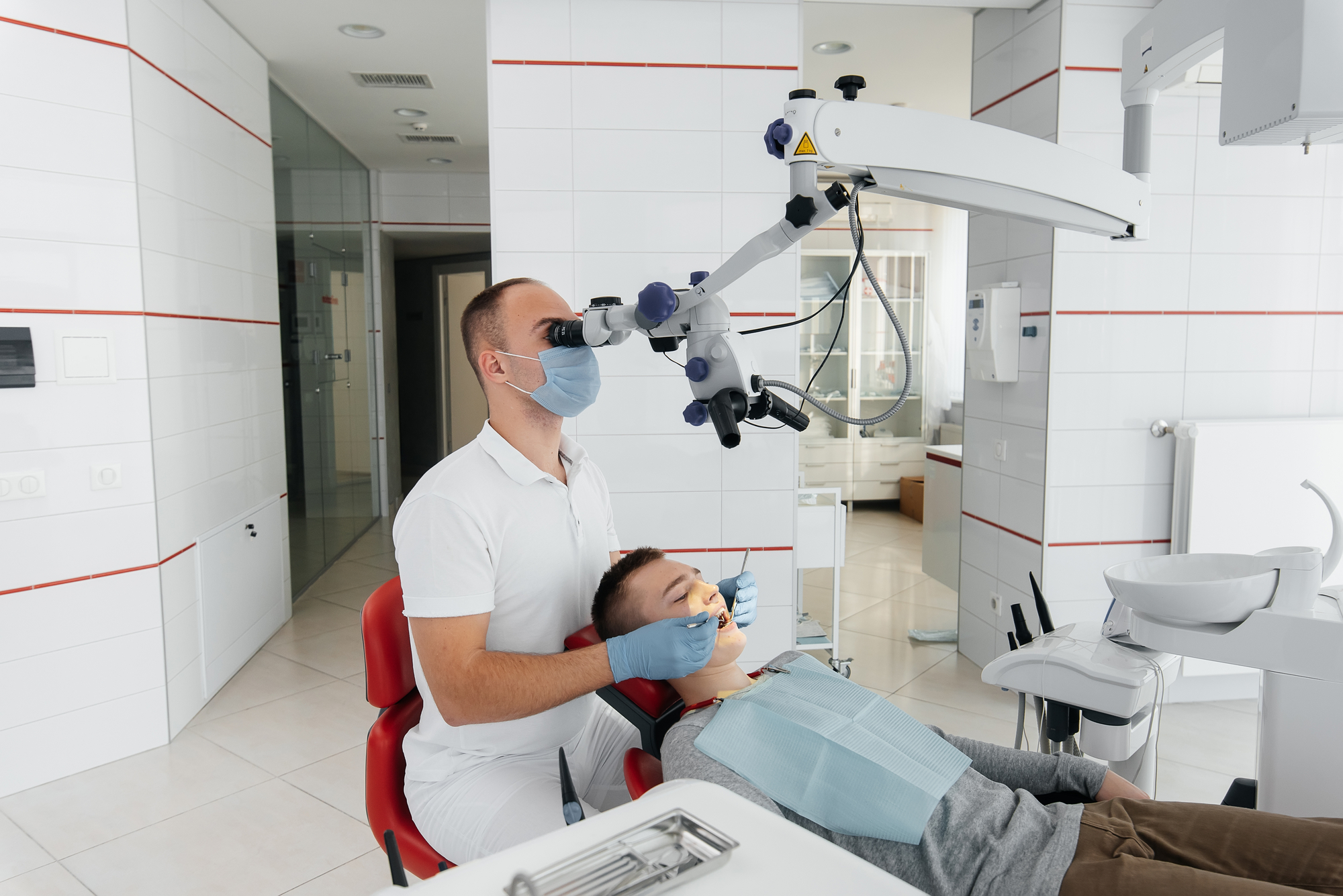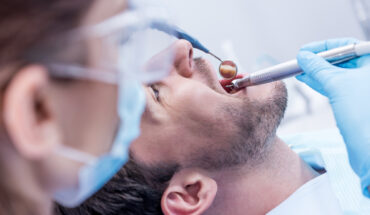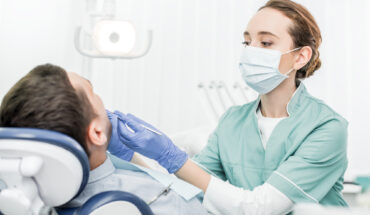
Orthodontics can be a great way to improve your smile, but did you know that it can also cause mouth ulcers and irritation? What about cancer? In this blog post, we will explore the potential risks of orthodontics and how you can protect yourself from them. From the chemicals used in braces to the increased risk of mouth cancer, read on to learn more about the potential risks of orthodontics and how you can avoid them.
What are mouth ulcers and irritation?
Mouth ulcers and irritation are a common side effect of orthodontic treatment. While they usually go away on their own, some people may experience more severe or persistent symptoms. In rare cases, mouth ulcers can lead to cancer.
Most mouth ulcers are harmless and will heal on their own within a few days. However, some people may experience more severe symptoms, such as:
-Persistent mouth pain
-Difficulty eating or drinking
-Swelling of the lips or tongue
-Redness or inflammation of the gums
-Fever
If you experience any of these symptoms, it’s important to see your orthodontist or dentist right away. They can determine if your mouth ulcers are caused by your orthodontic treatment or something else.
What is orthodontics?
Orthodontics is the branch of dentistry that deals with the prevention and correction of irregularities of the teeth, jaws, and bite. It can be used to improve the appearance of the teeth and jaws, as well as to improve the function of the bite. Orthodontic treatment can be used to treat a wide variety of dental problems, including crowding of the teeth, incorrect jaw position, and misaligned bites.
The most common type of orthodontic treatment is braces. Braces are devices that are used to align and straighten teeth. They are usually made of metal or plastic. The braces are attached to the teeth with wires and brackets. The brackets can be glued or cemented to the teeth, or they can be clipped onto the teeth. The wires are used to apply pressure to the teeth and move them into place.
Orthodontic treatment can also include other appliances, such as retainers, headgear, and expanders. Retainers are removable appliances that are worn after braces have been removed. They help to keep the teeth in their new position. Headgear is an appliance that is worn around the head or neck. It helps to correct severe bite problems by holding the teeth in place while they grow into their proper position. Expand- ers are appliances that are used to widen the arch of the mouth or correct crossbites (when upper and lower jaws don’t line up correctly).
Orthodontic treatment can be used to treat a wide variety of dental problems, including crowding of the teeth, incorrect jaw position, and misaligned bites. Other patients are also be concerned of this new viral disease mostly common is South Africa the “monkeypox”. Patients are mostly thinking twice for their dental treatment due to the thought of “could monkeypox be spread by other dental professionals“.
How can orthodontics cause mouth ulcers and irritation?
While orthodontics can certainly cause mouth ulcers and irritation, there is no evidence to suggest that it can cause cancer. However, it is important to be aware of the potential side effects of orthodontic treatment so that you can seek medical attention if necessary.
Mouth ulcers are a common side effect of orthodontic treatment, especially when brackets and wires are first placed on the teeth. These ulcers can be extremely painful and may make it difficult to eat or drink. If you develop mouth ulcers, be sure to brush your teeth gently and avoid eating spicy or acidic foods that could further irritate the area.
Orthodontic treatment can also cause irritation of the gums, cheeks, and lips. This is usually due to the rubbing of brackets and wires against the soft tissues in the mouth. Again, gentle brushing and avoiding irritating foods can help to minimize this discomfort. If the irritation persists, you may want to consult your orthodontist about adjusting your appliance or using a different type of braces material.
According to some some individuals the maximum time period of treatment with braces is for 2 years. Occurrence of oral cancer is not associated with dental braces. Braces can cause chronic ulcers, which rarely have a potential to turn into cancer in genetically predisposed individuals. So, to be safe immediate measures to alleviate the irritation caused by dental braces should be taken.
In rare cases, some people may experience an allergic reaction to the materials used in braces (such as nickel). This can cause itching, redness, swelling, and even difficulty breathing. If you experience any of these symptoms, it’s important to see a doctor immediately as it could be a sign of a serious allergic reaction.
Overall, orthodontic treatment is safe for most people. However, as with any medical treatment, there are potential risks and side effects that should be considered before starting treatment. If you have any concerns, be sure to discuss them with your orthodontist.
What about cancer?
Cancer is a serious concern for many people, and rightfully so. It is important to remember, however, that cancer is not caused by orthodontic treatment. While mouth ulcers and irritation may be a side effect of treatment, they are not indicative of cancer. Cancer is a disease that can be caused by a variety of factors, including genetics, lifestyle choices, and environment. If you are concerned about your risk for cancer, talk to your doctor about ways to reduce your risk.
Does teeth braces cause cancer after some years?
Braces have been found to cause mouth ulcers and irritation in some people. There is no scientific evidence to suggest that braces cause cancer. However, some people may experience discomfort or pain when wearing braces, which can lead to headaches.
Are there any other risks associated with orthodontics?
Yes, there are other risks associated with orthodontics. One of the most common is gum disease. Gum disease occurs when plaque builds up on teeth and gums, causing inflammation and irritation. If left untreated, gum disease can lead to tooth loss.
Another risk associated with orthodontics is tooth decay. When teeth are crowded or misaligned, it can be difficult to brush and floss properly. This can lead to plaque buildup and an increased risk of cavities.
Finally, orthodontic treatment can sometimes cause jaw pain or discomfort. This is usually temporary and goes away once the treatment is completed. However, if you experience persistent jaw pain, you should talk to your orthodontist about it.
Metal braces vs ceramic braces
There are many orthodontic options available to patients today, and each has its own set of pros and cons. Metal braces are the most traditional type of orthodontic device, and they are also the most visible. Though in some rare cases you may prefer to avoid metal braces but this kind of braces have been proven and tested for a long period of time. Ceramic braces are less visible, but they are also more fragile and can be more expensive.
Metal braces are made of stainless steel or titanium, and they are bonded to the teeth with a special adhesive. Ceramic braces are made of porcelain or composite material, and they are bonded to the teeth with a clear or tooth-colored adhesive. Both types of braces work by applying pressure to the teeth in order to move them into the correct position.
Metal braces are generally more effective than ceramic braces, but they can also be more uncomfortable. Ceramic braces tend to be less irritating to the gums and cheeks, but they can break more easily than metal braces.
As per National Library of medicine the role of metal hardware in oral cavity squamous cell carcinoma. Results: The majority of patients (74%) had prior exposure to metallic dental hardware. The younger population with almost exclusively oral tongue cancer had a high prevalence of metallic orthodontic braces (40%) within 15 years before diagnosis. In the 51+ year age group, 82% had crowns, dental implants, and/or dentures with metallic elements.
The choice between metal and ceramic braces is a personal one, and it is important to discuss all of your options with your orthodontist before making a decision.
Conclusion
While it is true that orthodontics can cause mouth ulcers and irritation, there is no evidence to suggest that it increases the risk of cancer. In fact, many people who wear braces report fewer mouth ulcers and less irritation than those who do not. So if you’re considering orthodontic treatment, don’t let the fear of cancer deter you from getting the beautiful smile you’ve always wanted.




